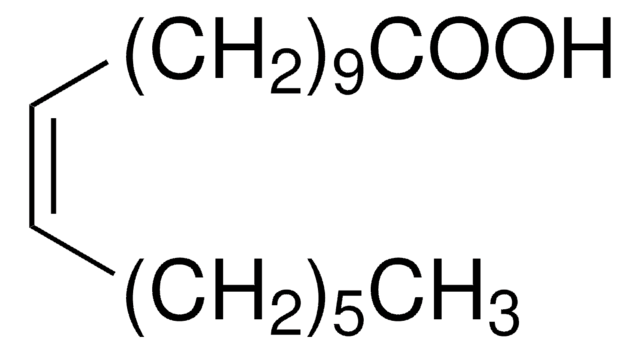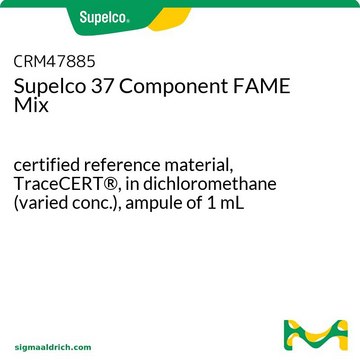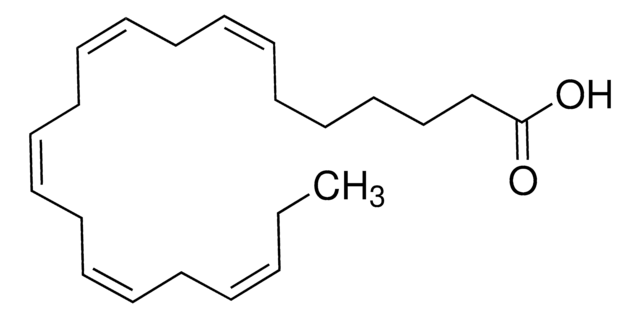69301
cis-Vaccenic acid
analytical standard
Sinonimo/i:
octadec-11(cis)-enoic acid, cis-11-Octadecenoic acid
About This Item
Prodotti consigliati
Grado
analytical standard
Saggio
≥97.0% (HPLC)
Stato
liquid
Durata
limited shelf life, expiry date on the label
Impurezze
≤0.5% trans-isomer
Indice di rifrazione
n20/D 1.459 (lit.)
P. ebollizione
150 °C/0.03 mmHg (lit.)
Punto di fusione
14-15 °C (lit.)
Densità
0.887 g/mL at 25 °C (lit.)
applicazioni
clinical testing
Temperatura di conservazione
−20°C
Stringa SMILE
CCCCCC\C=C/CCCCCCCCCC(O)=O
InChI
1S/C18H34O2/c1-2-3-4-5-6-7-8-9-10-11-12-13-14-15-16-17-18(19)20/h7-8H,2-6,9-17H2,1H3,(H,19,20)/b8-7-
UWHZIFQPPBDJPM-FPLPWBNLSA-N
Cerchi prodotti simili? Visita Guida al confronto tra prodotti
Descrizione generale
Applicazioni
- Quantification of the analyte and its photodegradation products in marine samples using gas chromatography coupled to electron impact mass spectrometry (GC-EIMS). The photo-oxidation of the lipid components of the two strains of aerobic photoheterotrophic bacteria, Erythrobacter sp. strain NAP1 and Roseobacter-related isolate COL2P is studied and the results obtained after irradiation of axenic and nonaxenic cultures of the diatom, Skeletonema costatum is compared.
- Quantification of the analyte in the methanolic extract of the leaves of Lepidium sativum using gas chromatography coupled to mass spectrometry (GC-MS).
- Quantification of the analyte in methanolic extract of Rosmarinus oficinalis leaves using gas chromatography coupled to mass spectrometry and Fourier transform infrared spectroscopy.
Prodotti consigliati
Codice della classe di stoccaggio
10 - Combustible liquids
Classe di pericolosità dell'acqua (WGK)
WGK 3
Punto d’infiammabilità (°F)
446.0 °F - closed cup
Punto d’infiammabilità (°C)
230 °C - closed cup
Scegli una delle versioni più recenti:
Possiedi già questo prodotto?
I documenti relativi ai prodotti acquistati recentemente sono disponibili nell’Archivio dei documenti.
Il team dei nostri ricercatori vanta grande esperienza in tutte le aree della ricerca quali Life Science, scienza dei materiali, sintesi chimica, cromatografia, discipline analitiche, ecc..
Contatta l'Assistenza Tecnica.







